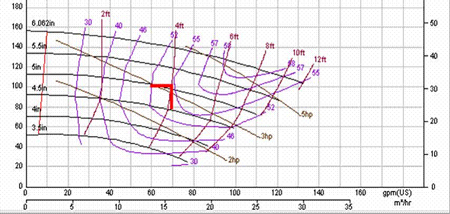In the August 2009 issue, we considered the following challenge:

From the available data tables, the vapor pressure of 150 deg F water is about 4 psia, or (x 2.31) = 9 psia.
Initially, when the tank is full, 17 ft of water is above the pump inlet, which together with the atmospheric pressure (34 ft), provides 42 ft of NPSH. The pump is a 1.5x1-6 centrifugal end suction, and the NPSHR performance at the operating point is 4 ft. Therefore, enough NPSHR exists.
When the tank is nearly empty, with the water level essentially at the entry to the pipe, there is only the atmospheric pressure of 34 ft. The NPSHA calculates as 25 feet-still above the required 4 feet.

NPSHAFULL = 34 + 17 - 9 = 42 ft > 4 ft → Okay!
NPSHAEMPTY = 34 + 0 - 9 = 25 ft > 4 ft → Okay!
Thus, the initial problem was not a lack of the NPSH margin, but the air being sucked to the pump when the water level was getting too low. Instead of preventing the water from exposing the inlet pipe and ruining the seal, the pump was moved to the surface, so maintenance would not have to climb down to fix it.
When the pump was moved up, there was still plenty of NPSHA when the tank was full, but not enough when the water level dropped low:
NPSHAFULL = 34 - 5 - 9 = 20 ft > 4 ft → Okay!
NPSHAEMPTY 34 - 22 - 9 = 3 ft < 4 ft → Problem!
At the low level, the pump would cavitate and stop delivering flow. Since the water level varied randomly, the pump problem would also randomly occur.
If the plant did some basic calculations (like the simplifications presented here), additional work and expenses might have been avoided. A simple level switch would have solved the problem simply, quickly and less expensively.
Which way would you do it?

